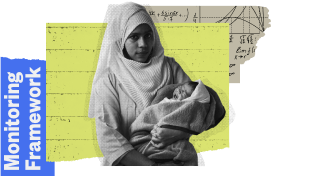Colombia
Download full country profile
 51,959,220
Total Population
51,959,220
Total Population
A dispute exists between the Governments of Argentina and the United Kingdom of Great Britain and Northern Ireland concerning sovereignty over the Falkland Islands (Malvinas).
The boundaries and names shown and the designations used on this map do not imply official endorsement or acceptance by the United Nations.
Colombia’s Population dynamics Data


Total Fertility Rate (births per woman)
Adolescent (15-19 years) Birth Rate (births per 1,000 girls)
Maternal Mortality Ratio (Per 100,000 live births)
Colombia’s national commitment
At the Nairobi Summit, the Republic of Colombia has committed to accelerate the reduction of preventable mortality and severe maternal morbidity in rural and dispersed areas. Colombia has committed to advocating for the full application of the right to abortion and to guaranteeing it as a health service.
In 2022, Colombia’s total fertility rate (TFR) – the number of children that would be born to a woman if she were to live to the end of her childbearing years – is 1.69.
Unmet need for family planning is 1.5 times higher among rural women than urban women, and is almost three times higher among women with no education compared with women with higher education. It is also highest among women living in the poorest households, and decreases with household income.
Colombia’s maternal mortality ratio has reduced slightly from 2000 to 2017 when it was estimated to be 83 deaths per 100,000 live births.
Recognizing the impact of unsafe abortion on maternal deaths, Nairobi Summit Commitment 3 highlights the integration of “a comprehensive package of sexual and reproductive health interventions, including access to safe abortion to the full extent of the law, measures for preventing and avoiding unsafe abortions, and the provision of post-abortion care into national UHC strategies, policies and programmes, and the need to protect and ensure all individuals’ right to bodily integrity, autonomy and reproductive rights, and to provide access to essential services in support of these rights”. In February 2022, Colombia’s Constitutional Court ruled that abortion is no longer a crime before 24 weeks of pregnancy.
Colombia’s national commitment
Colombia has committed to accelerated and effective actions to improve the health of adolescents and young people, as well as to promote concrete actions in favor of girls and women so that they can freely choose what they want to be or do in their lives. The country has committed to eliminating harmful practices including child marriage and early unions as well as all forms of violence against girls and women through territorial, institutional and community strategies.
Colombia’s adolescent birth rate has decreased from 1990 to 2020.
The adolescent birth rate is almost two times higher in rural areas than in urban areas, and six times higher among women living in the poorest households than those living in the wealthiest households. Approximately 35% of births before age 18 are among those women living in rural areas (compared to 17% of women living in urban areas). Births before age 18 are eight times higher among those women with no education compared to those with higher education, and almost seven times higher among women living in the poorest households compared with those women living in the wealthiest households.
The maternal death rate in Colombia has been falling for years, yet many of these gains have not been seen by Afro-Colombian and indigenous communities, where maternal death rates are two to four times higher, according to the health ministry; this situation has worsened under the COVID-19 pandemic.
Afrodescendent and indigenous and women and girls also face higher risks of violence and harmful practices, including sexual violence during armed conflicts, and labour exploitation.
As the High Level Commission’s 2022 report underscores, this heightened vulnerability stems from the intersecting oppressions they face, including discrimination and exclusion based on gender, ethnicity and the poverty that disproportionately affects Indigenous communities.
In Colombia the percentage of youth not in education, employment or training has been decreasing among women and men from 2005 to 2017;
in the latest year for which there is data, the percentage of youth not in education, employment or training for men is about 10 percentage points less than that for women.










































